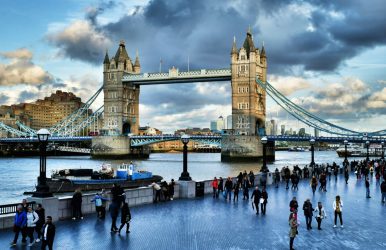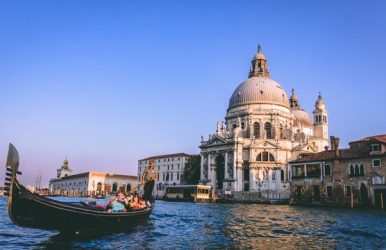11+ Great Places To Take Pictures In London: Photography Tourism In London
BY Joy Majhi Jul 19, 2022
Are you familiar with the terms “photography tourism” and “photography tours?” With many iconic hotspots like Westminster Bridge & Big Ben, Notting Hill, etc, you will find many places to take pictures in London. Now, taking snaps at these places is beyond capturing the moments or creating souvenirs for posterity. For the longest time, photography has been a crucial part of tourism. Along with being the most beautiful documentation of personal memories, photography has also been an important tool for marketing or promotion. However, recently, the “Photography” part has taken center stage with the rise of “Phototourism.” In Photography tourism or photographic tourism, a traveler visits a place with the primary interest of clicking pictures of the unique landscapes or subjects. In fact, I was exploring Instagram, and I found 337k posts with #phototour and #19.9k posts with #phototourism. In fact, photography tourism is cool in this age of social media, with pictures and videos being the primary elements in travelogues, reels, and vlogs. Further, editing photographs has now become easier with photo editor tools. Click a good snap and make it great with simple tricks! So, are you ready to explore photography tourism in London? These are the places you can visit. Places To Take Pictures In London: 11+ Places You Cannot Miss With the rise of photography tourism in London, you can now be a part of various photography tours. The tours include “Private Landmark Photo Tours,” “Night Photography Tour, “Exploring the Iconic Landscapes of London,” etc. The cost of these photography tours in London will be between £150 to £265. You can even join a street photography workshop in London, and that will cost you around £515. Having said that, these are the best places to take pictures in London. 1. The Houses of Parliament The Houses of Parliament tops our list of best places to take pictures in London. When you are on a tour of the UK Parliament, you take photographs for personal or non-commercial use. To be more specific, you can take photographs in St. Stephen’s Hall and Westminster Hall. Further, photography is allowed at New Palace Yard’s visitor area. From the Visitor Area, you will get an excellent view of the Elizabeth Tower. Tour And Travel Note If you want to take photos or videos for wider publication, you need permission in advance. You can email the Media and Communications Team. Moreover, if you want to take photographs at the House of Lords, you can call Black Rod’s Office at 020 7219 3099. 2. Big Ben/ The Elizabeth Tower Usually, people take the snap of the Big Ben or the Elizabeth Tower from the Westminster Bridge. However, if you want to try a different spot and capture a better frame of Big Ben, you must go under the bridge. Take the staircase and take the walkway that stretches along the River Thames. Find your spot with the River Thames creating the barrier between Big Ben and you. Tour And Travel Tips If you want the best snap of the Big Ben, you must be under the Westminster Bridge at around 7-8 AM. The light is soft in those hours and the rush is less. 3. St Paul’s Cathedral St Paul’s Cathedral, the beautiful building and the seat of the Bishop of London, is best photographed from Millennium Bridge. You can also take photographs inside St. Paul’s Cathedral when you are on a sightseeing tour. The common places for photography inside the church are the Golden Galleries, the Crypt, or the Stone. 4. Tower Bridge You can head to More London or London Bridge City to get the best shot of this iconic landmark. The Tower Bridge is probably the most popular landmark appearing in the photo postcards of England. Along with More London, some other places to Take photographs of the Tower Bridge include, Butler’s Wharf London Bridge Tavolino Bar & Kitchen Thames Path So, it’s your turn to capture this Victorian structure and an engineering marvel. 5. The Tower While you are at More London, swivel slightly and get a long-distance snap of The Tower, to get the best snap of The Tower. Of late, The Tower of London has become a great place of interest for photography enthusiasts. 2024 has been the 130th birthday of this London Landmark and an open-air exhibition held earlier this year to mark the occasion had some rarest photographs of the London Tower. These unseen photographs were from the opening week of The Tower in 1894. 6. Westminster Bridge The Westminster Bridge, with its Gothic architecture, is one of the best places to take pictures in London. Its distinct architecture complements the structure of Big Ben and the UK Parliament. You can take a panoramic snap of the Westminster Bridge, and you know why this landmark has inspired William Wordsworth and many other noble minds for their creations. Further, for the best snaps, visit the bridge during sunrise or sunset. 7. Notting Hill Notting Hill in West London exudes a casual and bohemian vibe with its quaint cafes. Further, the annual Notting Hill Carnival is the biggest draw for tourists. You can explore the best chances of street photography here. 8. Covent Garden Covent Garden is a popular shopping and tourist attraction in London. The highlight of this district is the Royal Opera House, which is often called the “Covent Garden.” Now, Covent Garden is one of the best places to take photos in London with the following areas. The Covent Garden Infinity Chamber Neal's Yard The Dial Ave Mario The Royal Opera House Flower Barrows British Phone Booths Floral Court Covent Garden becomes the ideal place for photography tourism during Christmas. The festive spirit is high and tangible here, with themed decor and the best delicacies served. 9. Greenwich Park Greenwich Park is the home of the Greenwich Observatory and the Prime Meridian, and it also has panoramic views of London. So, it is the perfect place to get fantastic snaps. This YT video highlights three great photography spots within Greenwich Park and explains how to take the perfect photograph of each one of them. 10. Holland Park This park is the most heavily wooded in London, so if you want shots of avenues of trees, it is the place to head to. When you are at Holland Park, don´t forget to take a few shots of its beautiful waterfall and interesting statues. 11. King Henry VII´s Mound In Richmond Park If you love history and photography, King Henry VII´s Mound In Richmond Park will be an ideal destination. This burial ground from the Bronze Age became famous after King Henry VIII stood here once for hunting. Further, it was a popular viewpoint for falconry and hunting. 12. Parliament Hill At Hampstead Heath Parliament Hill At Hampstead Heath is the best place to capture the London skyline. Further, Parliament Hill itself can be a subject of photography thanks to its association with the English Civil War. Restaurants That Have The Wow Factor! Great Places To Take Pictures In London In London, there is no shortage of places to eat. According to the latest data from The Office of National Statistics, the city has 9,505 full-service restaurants and clubs. It also has thousands of bars serving food, street stalls, and food trucks. So, it is not hard to find somewhere to enjoy a nice meal. As you can see from this list of most Instagrammable restaurants in London, many of them have invested a lot into transporting their diners to another world. When you eat in these restaurants, don’t miss your chance to take pictures. Here are the details of our few favorite favorites. If it is the food you want to take pictures of, head to Heston Blumenthal´s Dinner at 66 Knightsbridge, London SW1X 7LA. Call them at +44 20 7201 3833. For snaps of you dining in unique restaurant settings, head to Sketch at 9 Conduit Street, Mayfair, W1S 2XG (Contact No: +44 20 7659 4500). The dining area is divided into four zones making it easy to get the interesting shots you are after. For more inspiration, click the link above. If you want the sunlight beaming through the window arches to be the hero of your photography, 65a in London will be your go-to place. Visit this restaurant and bar at 65a Brushfield Street, E1 6AA. You can reach out to them at +44 20 7846 6548. Read Also: 6 Things To Do At The Beach This Fall 10 Best Days Out In London For Football Fans 10 Best Places To Travel In June – Travel Guide 2022











